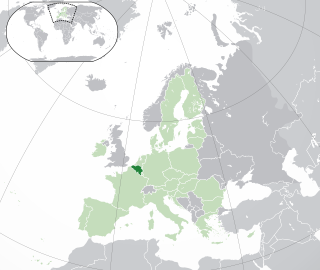
Godwin's law, short for Godwin's lawof Nazi analogies, is an Internet adage asserting: "As an online discussion grows longer, the probability of a comparison involving Nazis or Hitler approaches 1."
The Institute for Historical Review (IHR) is a United States–based nonprofit organization which promotes Holocaust denial. It is considered by many scholars to be central to the international Holocaust denial movement. Self-described as a "historical revisionist" organization, the IHR promotes antisemitic viewpoints and has links to several neo-Nazi and neo-fascist organizations.

Reductio ad Hitlerum, also known as playing the Nazi card, is an attempt to invalidate someone else's argument on the basis that the same idea was promoted or practised by Adolf Hitler or the Nazi Party. Arguments can be termed reductio ad Hitlerum if they are fallacious. Contrarily, straightforward arguments critiquing specifically fascist components of Nazism like Führerprinzip are not part of the association fallacy.
The Fourth Reich is a hypothetical Nazi Reich that is the successor to Adolf Hitler's Third Reich (1933–1945). The term has also been used to refer to the possible resurgence of Nazi ideas, as well as pejoratively of political opponents.
Antisemitic tropes or antisemitic canards are "sensational reports, misrepresentations, or fabrications" that are defamatory towards Judaism as a religion or defamatory towards Jews as an ethnic or religious group. Since as early as the 2nd century, libels or allegations of Jewish guilt and cruelty emerged as a recurring motif along with antisemitic conspiracy theories.

The history of the Jews in Belgium goes back to the 1st century CE until today. The Jewish community numbered 66,000 on the eve of the Second World War but after the war and The Holocaust, now is less than half that number.
Holocaust trivialization refers to any comparison or analogy that diminishes the scale and severity of the atrocities that were carried out by Nazi Germany during the Holocaust. The Wiesel Commission defined trivialization as the abusive use of comparisons with the aim of minimizing the Holocaust and banalizing its atrocities. Originally, holocaust meant a type of sacrifice that is completely burnt to ashes; starting from the late 19th century, it started to denote extensive destruction of a group, usually people or animals. The 1915 Armenian genocide was described as a "holocaust" by contemporary observers.

Different opinions exist among historians regarding the extent of antisemitism in American history and how American antisemitism contrasted with its European counterpart. In contrast to the horrors of European history, John Higham states that in the United States "no decisive event, no deep crisis, no powerful social movement, no great individual is associated primarily with, or significant chiefly because of anti-Semitism." Accordingly, David A. Gerber concludes that antisemitism "has been a distinctly minor feature of the nation's historical development."

Michael Wayne Godwin is an American attorney and author. He was the first staff counsel of the Electronic Frontier Foundation (EFF), and he created the Internet adage Godwin's law and the notion of an Internet meme. From July 2007 to October 2010, he was general counsel for the Wikimedia Foundation. In March 2011, he was elected to the Open Source Initiative board. Godwin has served as a contributing editor of Reason magazine since 1994. In April 2019, he was elected to the Internet Society board. From 2015 to 2020, he was general counsel and director of innovation policy at the R Street Institute. In August 2020, he and the Blackstone Law Group filed a lawsuit against the Trump administration on behalf of the employees of TikTok, and worked there between June 2021 and June 2022. Since October 2022, he has worked as the policy and privacy lead at Anonym, a "privacy-safe advertising" startup.
Gavriel David Rosenfeld is President of the Center for Jewish History in New York City and Professor of History at Fairfield University. His areas of academic specialization include the history of Nazi Germany, memory studies, and counterfactual history. He is an editor of The Journal of Holocaust Research and edits the blog, The Counterfactual History Review, which features news, analysis, and commentary from the world of counterfactual and alternate history.
Several individuals and groups have drawn direct comparisons between animal cruelty and the Holocaust. The analogies began soon after the end of World War II, when literary figures, many of them Holocaust survivors, Jewish or both, began to draw parallels between the treatment of animals by humans and the treatments of prisoners in Nazi death camps. The Letter Writer, a 1968 short story by Isaac Bashevis Singer, is a literary work often cited as the seminal use of the analogy. The comparison has been criticized by organizations that campaign against antisemitism, including the Anti-Defamation League (ADL) and the United States Holocaust Memorial Museum, particularly since 2006, when PETA began to make heavy use of the analogy as part of campaigns for improved animal welfare.

The Nazi gun control argument is the claim that gun regulations in Nazi Germany helped facilitate the rise of the Nazis and the Holocaust. Historians and fact-checkers have characterized the argument as dubious or false, and point out that Jews were under 1% of the population and that it would be unrealistic for such a small population to defend themselves even if they were armed.
The assertion that the Holocaust was a unique event in human history was important to the historiography of the Holocaust, but it has come under increasing criticism in the twenty-first century. Related claims include the claim that the Holocaust is external to history, beyond human understanding, a civilizational rupture, and something that should not be compared to other historical events. Uniqueness approaches to the Holocaust also coincide with the view that antisemitism is not another form of racism and prejudice but is eternal and teleologically culminates in the Holocaust, a frame that is preferred by proponents of Zionist narratives.
Charles W. Patterson is an American author, historian, and animal rights advocate, best known for his books, Eternal Treblinka: Our Treatment of Animals and the Holocaust, Anti-Semitism: The Road to the Holocaust and Beyond, Animal Rights,The Civil Rights Movement, and Marian Anderson.
The Unz Review is an American website and blog, founded and edited by far-right activist and Holocaust denier Ron Unz. It is known for its publication of far-right, conspiracy theory, white nationalist, antisemitic writings and pro-Russia propaganda.
This timeline of antisemitism chronicles the facts of antisemitism, hostile actions or discrimination against Jews as a religious or ethnic group, in the 21st century. It includes events in the history of antisemitic thought, actions taken to combat or relieve the effects of antisemitism, and events that affected the prevalence of antisemitism in later years. The history of antisemitism can be traced from ancient times to the present day.

Comparisons between Israel and Nazi Germany occur frequently in some veins of anti-Zionism in relation to the Israeli–Palestinian conflict. The legitimacy of these comparisons and their potential antisemitic nature is a matter of debate. Historically, figures like historian Arnold J. Toynbee have drawn parallels between Zionism and Nazism, a stance he maintained despite criticism. Scholar David Feldman suggests these comparisons are often rhetorical tools without specific antisemitic intent. The Anti-Defamation League (ADL) sees them as diminishing the Holocaust's significance.

The relationship between the Armenian genocide and the Holocaust has been discussed by scholars. The majority of scholars believe that there is a direct causal relationship between the Armenian genocide and the Holocaust, however, some of them do not believe that there is a direct causal relationship between the two genocides.
The international Jewish conspiracy or the world Jewish conspiracy has been described as "the most widespread and durable conspiracy theory of the twentieth century" and "one of the most widespread and long-running conspiracy theories". Although it typically claims that a malevolent, usually global Jewish circle, referred to as International Jewry, conspires for world domination, the conspiracy theory's content is extremely variable, which helps explain its wide distribution and long duration. It was popularized in the late nineteenth and early twentieth century especially by the antisemitic forgery The Protocols of the Elders of Zion. Among the beliefs that posit an international Jewish conspiracy are Jewish Bolshevism, Cultural Marxism, Judeo-Masonic conspiracy theory, White genocide conspiracy theory and Holocaust denial. The Nazi leadership's belief in an international Jewish conspiracy that it blamed for starting World War II and controlling the Allied powers was key to their decision to launch the Final Solution.
While there is no notable neo-Nazi movement in Taiwan, the use of Nazi symbolism and imagery in the country has been observed throughout the years, often causing controversy. Those occasions involve a Nazi themed parade at a school, restaurants serving dishes honouring Nazis or displaying Nazi-related pictures and other decor, which led to public outcries.













